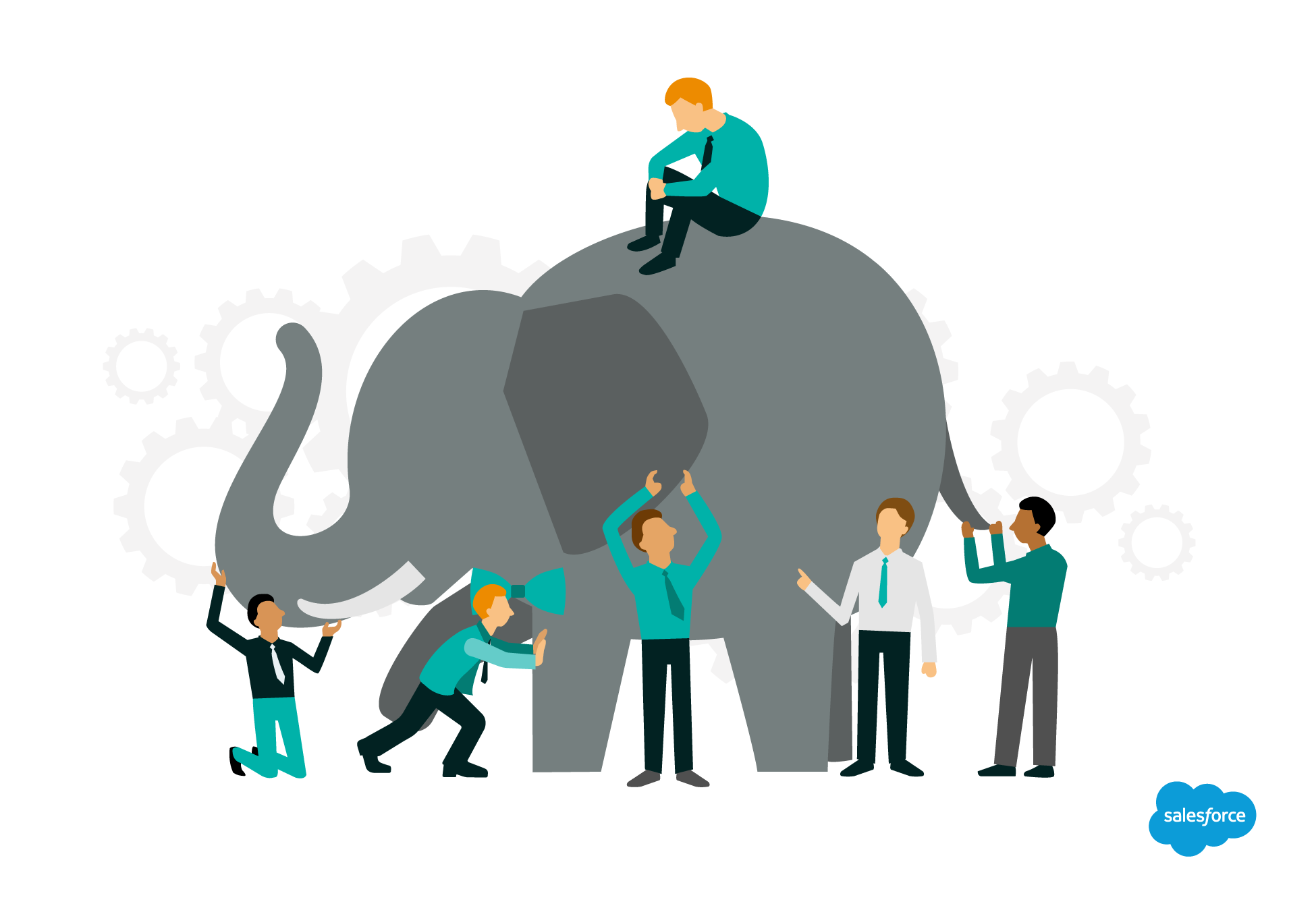what is big data
What is Big Data Analytics? The Elephant in the Boardroom.

What is the Big Data in Your Organization?
How Can Big Data be Used in Your Marketing Strategy?

In the past, companies collected transaction details, customer contact information, and possibly email addresses. They’d mail, email, or even telephone about a generic sale or new product offering. The good salespeople would keep notes about their customers’ preferences and keep in contact.
In the age of big data, companies can use customer loyalty numbers or IP addresses to collect information on products viewed, products purchased, and general shopping and web browsing habits. This data can be used to determine the customer’s stage in the buying process and to make future recommendations. By purchasing other data, retailers can discover credit history, homeownership status, ethnicity, online discussion habits, educational attainment, and purchasing preferences.
At the heart of combining and analyzing data are data analysts and data management software. By comparing and analyzing sets of data, companies are able to discover patterns in behavior to inform marketing strategy.
Five Tips to Take Advantage of Big Data
Implementing strategies based on big data analysis can improve sales margins between 8 and 25 percent. Hatami, Vander Ark, and Baumgartner, in their book Sales Growth: Five Proven Strategies from the World’s Sales Leaders, show that implementing practices informed by big data improves sales between 2 and 8 percent in each of the following areas:
- hone the multichannel experience,
- improve cross-selling,
- increase placement optimization,
- capitalize on location-based selling,
- inform assortment optimization, and
- refine in-store behavior analysis.
The combined improvements in each of the six areas combined have resulted in the increased sales rates between 8 and 25 percent, a significant motivator for enacting big data practices.
While most companies have the data to begin using it strategically, just 4 percent of 1,600 businesses surveyed had data strategies and data governance measures in place to realize the commercial and operational benefits of their data.
What is big data analytics? Big data analytics examines large sets of a variety of data to discover hidden patterns, correlations, customer preferences, and market trends.
The following are steps to help your company use big data analytics can help your company grow:
1. Define your company goals first.
Don’t even attempt to implement a big data initiative without first defining an overall objective. Improving your win rate and bottom line is assumed, but focus on the specific hows. Do you want to decrease the cart abandon rate? Target new homeowners? Predict businesses poised for growth? Suggest custom products to an emerging market?
Identifying specific objectives will determine how you approach your big data analytics.
2. Start with the data in your system.
You probably have a wealth of data already, so a great place to start with big data is with the data already existing in your system. Now is a good time to make sure all data is in one place. A CRM system is an excellent way to collect and store data.
Your company is likely sitting on a wealth of data already, write Jeanne W. Ross, Cynthia M. Beath, and Anne Quaadgras in the Harvard Business Review. Most companies, they report, “have not yet cashed in on the information those platforms make available.” CRM reports can be used to analyze your existing data to inform your objectives. For instance, running a report on all X products purchased by time period and location can show you trends. A region that has purchased X product more than other regions would warrant more attention and effort during the said time period.
3. Establish a data-protective culture.
Provide the marketers and decision makers in your company with the data and encourage decisions to be made based on the reports you have at your fingertips. Look for patterns and fill gaps in the information needed to make better decisions on a daily basis.
Protect the accuracy of your data by keeping data updated and making accurate data everyone’s responsibility. According to studies by Ovum, Poor quality data costs businesses around $700 billion a year, or 30 percent of the average company’s revenue. When implementing big data analytics, it’s essential to protect the accuracy of data. Cloud-based CRM software is ideal to ensure everyone in the company has the same data, updated in real-time.
4. Invest in the right people and tools.
As your company becomes more aware of how big data can be used to meet objectives, match your goals with an investment in data analysts and data analytic tools. More complicated data analytics requires experts in predictive data analysis.
Realize timing is everything. As you discover trends and opportunities, be able to act. Drive information to the level where decisions are made and action taken.
Big Data is Like the Six Blind Men and the Elephant

Big data analytics is the effort to analyze the data to identify trends and opportunities and get the information into the hands of the people who can take action. While big data promises big rewards to those who can harness its power, implementing big data needs to be done with clear goals and direction. Big data analytics is the sorting and sifting of the data to provide the right information at the right time to the right people in the right place. Decisions about what data to gather and analyze can be critical to the success of big data initiatives. Much time and money can be wasted chasing big data initiatives that don’t pan out if the rest of the organization is not on board.
Big data is a lot like the story of the 6 blind men and the elephant. Each of them touched part of the elephant: the tusks, the tail, the side, the legs, the trunk, and the ear and each was convinced their perspective of what an elephant looked like was correct: a spear, a rope, a wall, a tree, a snake, and a fan. Though they were right about their individual perspective, none had the entire picture.
Like the blind men and the elephant, the trick to effectively using big data is to get your organization as a whole to contribute the understanding of your elephant and to coordinate efforts in order to use big data for identifying opportunities and acting on them.


